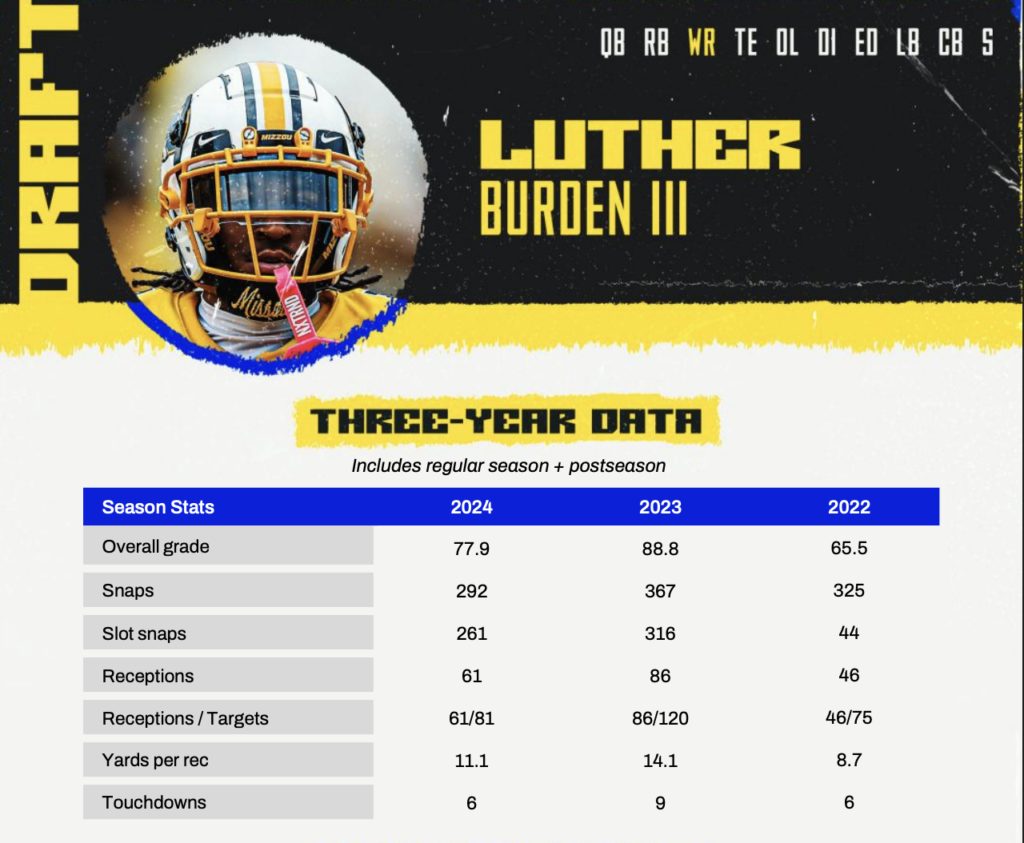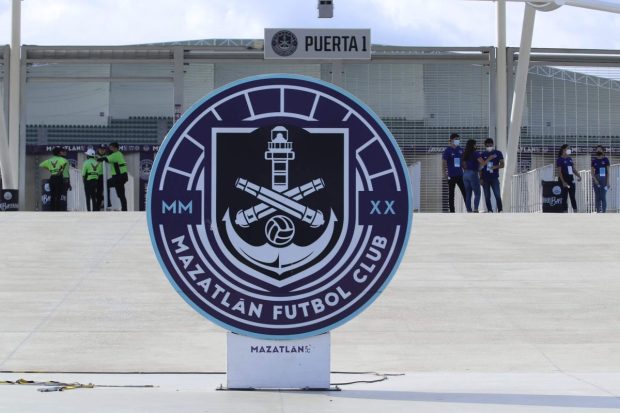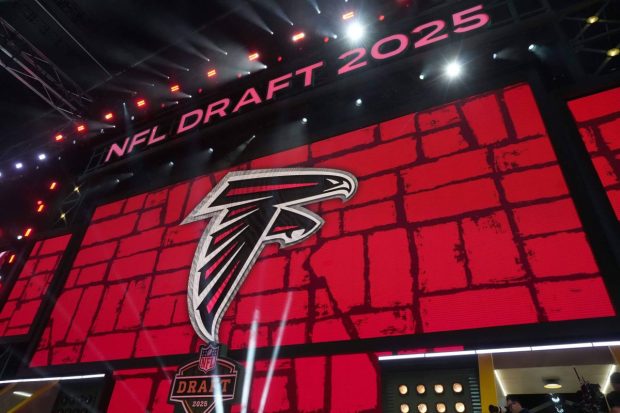
- The Lions added to an already stacked roster: The NFC North champions bolstered their trench units with defensive tackle Tyleik Williams and guard Tate Ratledge in the draft.
- The Bills remain the class of the AFC East: Six of the team’s first seven selections targeted the defense, including cornerback Maxwell Hairston, defensive tackle T.J. Sanders and edge defender Landon Jackson.
- Final chance to claim 25% off PFF+: Use code DRAFT25 and unlock access to player grades, fantasy tools and the 2025 Draft Guide.
Estimated Reading Time: 13 minutes

With the 2025 NFL Draft complete, we now have a clearer picture of what every roster in the NFL will look like this season. Be that as it may, we’ll examine each team’s roster and their standing within their respective divisions.
AFC East
The AFC East is still the Buffalo Bills’ for the taking, but there may be some competition heating up for second place.
Buffalo chose to use this year’s draft to improve a defense that ranked 28th in PFF overall grade last season. Six of the franchise’s first seven selections targeted the defense, including cornerback Maxwell Hairston, defensive tackle T.J. Sanders and edge defender Landon Jackson.
Miami beefed up in the trenches with its first two picks, defensive tackle Kenneth Grant and offensive lineman Jonah Savaiinaea. The concern for the Dolphins will be improving a coverage unit that ranked 25th in PFF coverage grade last season, especially given the Jalen Ramsey trade speculation. They took a couple of fliers in the secondary on Day 3, but they don’t have many starting-caliber players in that unit.
New England has finished in last place in each of the past two seasons, but Mike Vrabel is bound to change that. After loading up on defense in free agency, the Patriots landed four potential starters on offense in Will Campbell, TreVeyon Henderson, Kyle Williams and Jared Wilson. Campbell and Wilson will be of particular interest on the offensive line as the team aims to improve upon its abysmal 52.3 PFF pass-blocking grade from last season.

The Jets are taking a long-term approach to player development under their new regime. Their first three picks, offensive tackle Armand Membou, tight end Mason Taylor and cornerback Azareye’h Thomas, were among the youngest players in the draft. Aaron Glenn is determined to reset the culture of this team before any sort of postseason push commences.
NFC East
The Eagles won this past year’s Super Bowl because general manager Howie Roseman continually finds surplus value in his draft picks. Jihaad Campbell, the best linebacker in the class, fell to Philadelphia late in the first round. Safety Andrew Mukuba is a perfect fit in Vic Fangio’s defense. Even their final two picks, offensive tackle Cameron Williams and edge defender Antwaun Powell-Ryland, were excellent values in the sixth round. Philadelphia continues to dominate the draft process.
Washington used a chunk of its draft capital to acquire Laremy Tunsil and Deebo Samuel, both of whom substantially improve a burgeoning offense. First-round pick Josh Conerly Jr. should further bolster the team in pass protection, where the team ranked 22nd in PFF grade last season. Cornerback Trey Amos should also improve a defense that ranked 30th in PFF coverage grade.
The Cowboys may have reached a bit by drafting guard Tyler Booker at the 12th overall pick, but they made up for it by selecting Donovan Ezeiruaku and Shavon Revel on Day 2. The one question Dallas hasn’t answered this offseason is how it will improve a defensive front that ranked 30th in PFF run-defense grade last season, aside from the selection of Ezeiruaku.

The success of Jaxson Dart, who led the FBS in PFF passing grade in 2024, will be the primary determinant in the Giants’ draft success. However, they improved in the trenches by selecting Abdul Carter, Darius Alexander and Marcus Mbow. Fourth-round pick Cameron Skattebo, who led the Power Four in PFF rushing grade last season, could eventually be the workhorse New York has been seeking in the backfield.
AFC North
Baltimore found massive value in its two early defensive selections, safety Malaki Starks and edge defender Mike Green. Starks adds even more versatility to an already outstanding secondary. Green fell to the second round due to character concerns, but he was the highest-graded edge defender in the FBS last season. The Ravens also took some fliers later in the draft with the hopes of adding more talent to their interior offensive line. There are still a couple of unanswered questions on the roster, but not nearly as many as the rest of the division.
The Steelers made headlines by not selecting a quarterback until the sixth round (Will Howard). Instead, they drafted defensive tackle Derrick Harmon, who led the FBS with 55 pressures in 2024, in the first round. They followed that up with a potential future starter at running back in Kaleb Johnson. If we assume Aaron Rodgers will be their quarterback, which is still unconfirmed, then the Steelers are likely still the second-best team in this division.
The Bengals selected several players at areas of need. Edge defender Shemar Stewart is an athletic freak who gives them a higher floor in run defense. Linebacker Demetrius Knight Jr. was one of the best coverage defenders at his position over the past two years. Dylan Fairchild should improve a guard unit that ranked last in the NFL in PFF pass-blocking grade in 2024. Joe Burrow and the offense give this team a solid foundation, but their championship hopes rest with filling in the holes around them.
The Browns were the story of the draft after trading out of the second overall pick and then selecting quarterback Shedeur Sanders in the fifth round. There will likely be a wide-open quarterback competition between Sanders, fellow rookie Dillon Gabriel and veterans Kenny Pickett and Joe Flacco. The team also did not select any wide receivers or offensive linemen. There’s a good chance that the Browns will be drafting in the top five again next year.
NFC North
The order of the NFC North stays the same for now, but this could be the most competitive division in the NFL in 2025.
Detroit still has a loaded roster and added to its talented trench units by selecting defensive tackle Tyleik Williams and guard Tate Ratledge. Free-agent cornerback D.J. Reed was also a massive addition to the secondary. Assuming Aidan Hutchinson and Alim McNeill return to full health, the Lions’ defense could be dangerous. Their biggest obstacle, though, will be the loss of both of their coordinators.
J.J. McCarthy missed all of 2024 with a knee injury, but he is set up to succeed in Minnesota. The Vikings’ offensive weakness last season was interior pass protection. They responded by adding free agents Ryan Kelly and Will Fries and selecting Ohio State guard Donovan Jackson in the first round of the draft. They also bolstered their interior pass rush with Jonathan Allen and Javon Hargrave, who should improve a defensive tackle unit that ranked 29th in PFF pass-rush grade.
The Bears finished a distant fourth in the division last season but appear to have closed the gap significantly after a busy offseason. They overhauled their offensive line with guard Joe Thuney and center Drew Dalman, who both ranked among the top seven players at their positions in PFF overall grade last season. Chicago’s first two draft picks, Colston Loveland and Luther Burden III, are dynamic playmakers who could bring endless possibilities to Ben Johnson as he draws up plays for this offense.

AFC South
Houston has offensive line concerns after trading Laremy Tunsil, but the team still has C.J. Stroud and a dynamic pass defense as its foundation. The Texans supported Stroud on the outside by selecting Iowa State wide receivers Jayden Higgins and Jaylin Noel on Day 2 of the draft.
The Colts were gifted Penn State tight end Tyler Warren, who led all Power Four tight ends with a 93.4 PFF receiving grade in 2024, when he fell to the 14th overall selection in the draft. He joins a loaded receiver unit that includes Michael Pittman Jr., Josh Downs and Alec Pierce. The secondary was improved in free agency, as well, with the additions of Charvarius Ward and Camryn Bynum. Now, the Colts just need to figure out their quarterback situation.
The Jaguars made the biggest splash by trading a future first-round pick to acquire Heisman Trophy winner Travis Hunter. He’ll likely play more of an offensive role alongside Brian Thomas Jr. at wide receiver, which Trevor Lawrence should be thrilled about. If they can protect Lawrence up front, the Jaguars could be in for a bounce-back season, led by an explosive offense.
This season in Tennessee will be about developing Cam Ward and his surrounding young talent for future success. Ward, college football’s highest-graded quarterback in 2024, will hopefully find a rapport with Calvin Ridley, as well as late-round picks Elic Ayomanor and Chimere Dike.
NFC South
Having won the past four NFC South titles, the Buccaneers are the class of the NFC South until further notice. They spent their first-round pick on Ohio State’s Emeka Egbuka, which adds to their incredibly talented wide receiver unit. They also brought in multiple young players at edge defender and cornerback to improve their biggest weakness, pass defense.
The Falcons recorded the second-worst PFF pass-rush grade in the NFL last season and were hell-bent on fixing that in the draft. They acquired two of this year’s most dynamic pass rushers in Jalon Walker and James Pearce Jr. They also drafted two safeties, Xavier Watts and Billy Bowman Jr., who combined to haul in 21 interceptions over the past two seasons. Atlanta is hoping its pass defense can match its potentially explosive offense.
After a free-agency period spent adding functional players to the league’s lowest-graded defense, Carolina decided to give Bryce Young a potential top wide receiver, Tetairoa McMillan. Once McMillan was in tow, the team turned its attention to the defensive line. They got excellent value by selecting Nic Scourton, Princely Umanmielen and Cam’Ron Jackson. If Young continues his play from the second half of last season and this defense shows improvement, the Panthers could be fun to watch in 2025.
New Orleans’ draft is likely to be judged by the success of second-round pick, quarterback Tyler Shough. They helped him in the first round by selecting Texas tackle Kelvin Banks Jr., which should improve the NFL’s lowest-graded pass-blocking unit from a season ago. The Saints added several talented defensive players in the middle rounds, but Kellen Moore is going to spend much of this season figuring out who his foundational players are on offense.
AFC West
Until someone knocks them off their perch, the Chiefs will likely continue to sit atop any AFC West predictions. They managed to hold onto linebacker Nick Bolton and guard Trey Smith through the free-agency period, but their offensive line will continue to be a question mark. Adding offensive tackle Josh Simmons in the draft certainly helps, though he is still recovering from a knee injury suffered last October.
Picking between the Broncos and Chargers for second place may have been the toughest decision in this entire exercise. Denver added linebacker Dre Greenlaw and safety Talanoa Hufanga via free agency. The team also selected standout Texas cornerback Jahdae Barron in the first round of the draft. The Broncos could have the best defense in the NFL in 2025. Adding running back RJ Harvey and wide receiver Pat Bryant should also make Bo Nix’s life easier on offense.

The Chargers also spent much of the offseason surrounding their star quarterback with talent. Mike Williams and rookies Tre Harris and KeAndre Lambert-Smith should add a more vertical element to the offense. First-round pick Omarion Hampton should give the Chargers the legitimate star at running back they were missing last year. The team didn’t add a ton on defense, but as long as they continue to prevent explosive plays, they should give the offense a chance to win games.
The Raiders should be much improved on offense with the additions of quarterback Geno Smith, running back Ashton Jeanty and wide receivers Jack Bech and Dont’e Thornton Jr. Any pessimism looming over this team likely stems from the marginal improvement of the lowest-graded coverage unit in the NFL last season.
NFC West
The Rams are currently the class of the NFC West and are aiming for one more Super Bowl run with Matthew Stafford as their quarterback. They jettisoned wide receiver Cooper Kupp but added Davante Adams as his replacement. They had an intriguing draft in which they added tight end Terrance Ferguson and a plethora of defensive line depth, as well as a 2026 first-round pick from Atlanta.
Jonathan Gannon is determined to improve his defense in Arizona. He appears to have done so with veteran acquisitions Josh Sweat, Dalvin Tomlinson and Calais Campbell, the last of whom led Miami in PFF run-defense grade in 2024. The team also added excellent value in the draft with its first two picks, defensive tackle Walter Nolen and cornerback Will Johnson. If those moves pan out and the offense plays a bit more consistently, the Cardinals should be in the postseason hunt.
The 49ers endured plenty of bad luck in 2024, winning only six games on the season. However, they were the NFL’s ninth-highest graded team and should be better with a return to health. They didn’t do much in free agency but were determined to repair their run defense in the draft, doing so with the additions of defensive linemen Mykel Williams, Alfred Collins and CJ West.
Seattle enters 2025 with a ton of turnover on offense. The Seahawks lost their offensive coordinator, their quarterback and two of their top three wide receivers this offseason. They brought in Sam Darnold, who finished last season with an 80.7 PFF overall grade, as Geno Smith’s replacement. The big question is whether the offensive line, including first-round pick Grey Zabel, can protect him.
This news was originally published on this post .










Be the first to leave a comment